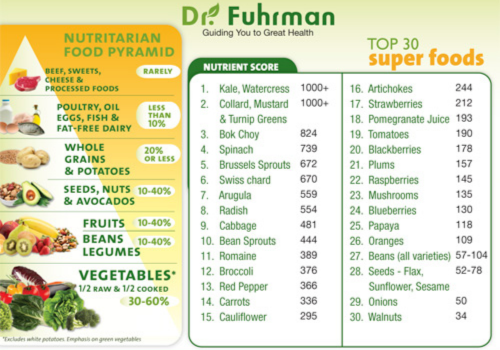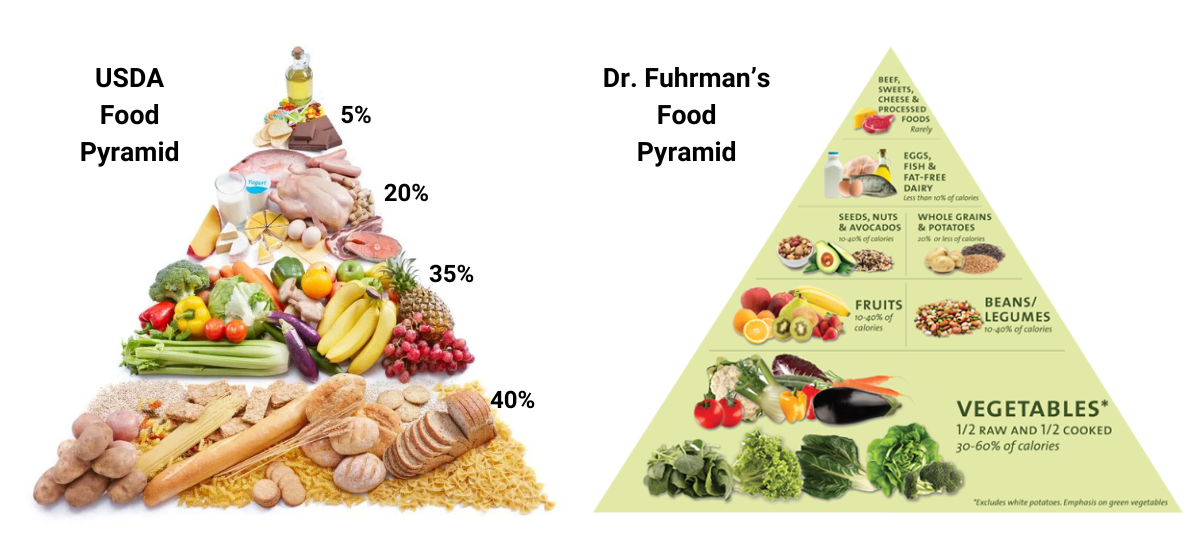We live in a world of diets, so many versions of what you should eat, and why you should eat this way. There is a lot of trial and error trying to figure out what is right and what is wrong. But have you ever thought about why do you eat what you eat?
Since we were raised by our parents, they followed a certain pattern, promoted by the USDA (The United States Department of Agriculture), even if you are not from the United States, this has been promoted worldwide, as it was a great way to make sure that the general public gets enough calories to do their jobs and live an energetic life. The structure of the USDA Food Pyramid was focused on:
- Carbohydrate intake – Bread, cereal, rice, pasta, potatoes. (40%)
- Fruits and vegetables (35%)
- Meat, fish, eggs & milk (25%)
- Fat, oil, sugar, sweets (5%)
This sounds like an amazing solution for a general public that works physically every day and needs a lot of energy to do their job well. In case you work at a desk or don’t work physically at all, you’ll have to compensate with daily exercise (USDA recommends 30 minutes of cardio every day).
Most jobs for the general public in the ’90s, when this food pyramid started to be promoted, were working in industrial jobs, requiring a lot of physical activity throughout the day. Also, the food groups promoted were easily accessible to the general public (think about the supermarket shelves full of cereal boxes, bread being a general norm in every family. Rice, Pasta & Potatoes are cheap to purchase and easy to cook.
According to the Bureau of Labor Statistics, in most 1st world countries, based on technological advancements and service-focused labor, 80% of the jobs don’t require any physical work and only 20% of people work physically. The fast advancements in the workforce have significant side effects on the general health of the public, like obesity, auto-immune & cardiovascular diseases, and many others. Here is a statistic from the World Health Organization related to obesity:
- 1990: Adult obesity rate ~23.2%
- 2000: Adult obesity rate ~30.5%
- 2017-2018: Adult obesity rate ~42.4%
- Projected 2024: Adult obesity rate possibly exceeding 50%
What is the solution?
Doctor Joel Fuhrman proposed a healthier food pyramid in 2010 that covers most of the issues of our time regarding a sedentary lifestyle and dealing with its side effects. His concern is that we eat too much non-nutritious foods and that can have a bad effect on our overall health.
To explain his strategy he emphasized the formula: Health = Nutrients / Calories (H = N / C)
Meaning that health is defined by the amount of nutrients we get per the calories we eat.
Nutrients are important for our body’s immune system and ability to heal, therefore to counter the sedentary lifestyle, we need to eat healthier foods to give our body the ability to recover from the day-to-day stress we feel daily (something that is done with physical activity, as the body has a detoxification system built by sweating and it also relieves you from stress).
His food pyramid structure is defined by the following:
- Vegetables (especially greens): Salad, Kale, Spinach, Cabbage, Broccoli (30-60%) – or unlimited, as they have low-calorie intake.
- Fruits, Legumes, and Beans: Strawberries, Blackberries, Oranges, Red Pepper, Carrots, Cauliflower, Tomatoes, Beans (all kinds), (10-40%)
- Nuts and Seeds: Sunflower, Sesame, Flax, Wallnuts. (10-40%)
- Whole Grains & Potatoes (20% or less)
- Minimal Animal Products: Encouraged to limit or avoid for better health outcomes. (10% or less)
- Oils, Cheese, and Processed Foods: Used sparingly or avoided. (very rare)
Superfoods to Consider
To complement Dr. Fuhrman’s approach, here’s a list of top superfoods known for their high nutrient density. Incorporating these foods into your diet can maximize your nutrient intake while minimizing calorie consumption.

Obviously, this would be a drastic change from a traditional meal plan, but it should be treated as a different perspective to prevent disease (or to recover from a disease) and maintain a healthy lifestyle. Going back to his formula, Health = Nutrients / Calories (H = N / C)
Conclusion
There is nothing wrong with any food pyramid, but it is definitely a different result depending on the lifestyle you have.
- Active lifestyle – if you do a lot of exercise, or experience a physically challenging workplace – the traditional USDA food pyramid fits you.
- Sedentary lifestyle – if you have a desk job, and don’t engage too much in physical activities, you should shift to a healthier way of eating as the side effects of the USDA food pyramid are already documented and the statistics don’t look too great worldwide.
Call to action
Did this article make you reflect on your eating habits and your lifestyle? What have you tried so far, what worked for you and what do you think about the perspective described in the article?
Let us know in the comments below!



No responses yet